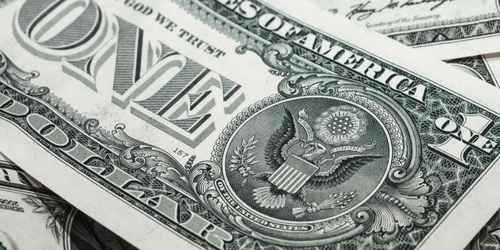No history of banking in the 1980s would be complete without a discussion of the savings and loan (S&L) industry’s concurrent crisis. A look back at the S&L debacle (as it is now known) reveals several important lessons for financial-institution regulators. The financial sector experienced a period of distress in the 1980s, with a focus on the nation’s savings and loan industry. This article will serve as an insight and go into detail to discuss the savings and loan crisis of the 1980s, what caused the crisis, and a lot of other facts that might interest you. Let’s dive in!
What are Savings & Loans?
Savings and loans arose from the social goal of achieving homeownership. In 1831, the first S&L was established in Pennsylvania. These institutions were founded by groups of people who wanted to own their own homes but lacked the necessary savings. Banks did not lend money for residential mortgages in the early 1800s. The group members would pool their savings and lend them to a few of the members to help finance their home purchases. As the loans were repaid, funds were available to lend to other members.
S&Ls, also known as thrifts, are generally smaller than banks, both in terms of number and assets under management. Nonetheless, they were important conduits for the US mortgage market. In 1980, there were nearly 4,000 thrifts with total assets of $600 billion, $480 billion of which was in mortgage loans (FDIC). That amounted to roughly half of the $960 billion in outstanding home mortgages at the time (Board of Governors 2013).
What was the Savings & Loan Crisis of the 1980s?
In the 1980s, the United States experienced a financial crisis caused by skyrocketing inflation as well as the rise of high-yield debt instruments known as junk bonds, which resulted in the failure of more than half of the nation’s Savings and Loans institutions (S&Ls).
A savings and loan institution, also known as a thrift, is a type of community bank. It offers consumers checking and savings accounts, as well as loans and mortgages.
The S&L was invented in the 1800s. They were founded with the goal of providing low-cost mortgages to the working class so that they could purchase homes. The most well-known example of thrift can be found in the film It’s a Wonderful Life. There were more than 3,200 S&Ls in the United States in the 1980s; fewer than 700 remain today—and the S&L crisis is estimated to have cost taxpayers up to $160 billion.
Understanding the Savings and Loan Crisis of the 1980s
S&Ls’ ability to compete with other lenders was severely limited by restrictions imposed on them at their inception by the Federal Home Loan Bank Act of 1932, such as caps on interest rates on deposits and loans. For example, in the early 1980s, as savers poured money into newly created money market funds, S&Ls were unable to compete with traditional banks due to lending restrictions.
Add to that a recession caused by the Fed’s high-interest rates in an attempt to end double-digit inflation, and the S&Ls were left with little more than an ever-dwindling portfolio of low-interest mortgage loans. Their revenue stream had been severely constrained.
S&Ls’ fortunes had turned by 1982. After turning a healthy profit in 1980, they were losing up to $4.1 billion per year.
How the Savings & Loan Crisis of the 1980s Unfolded
In 1982, President Ronald Reagan signed the Garn-St. Germain Depository Institutions Act, which eliminated loan-to-value ratios and interest rate caps for S&Ls and allowed them to hold 30% of their assets in consumer loans and 40% in commercial loans in response to the poor prospects for S&Ls under current economic conditions. S&Ls were no longer subject to Regulation Q, which resulted in a narrowing of the spread between the cost of money and the rate of return on assets.
Because the reward was no longer linked to the risk, zombie thrifts began paying higher and higher interest rates to attract funds. S&Ls began to invest in riskier commercial real estate as well as even riskier junk bonds. This strategy of investing in riskier and riskier projects and instruments was based on the assumption that they would result in higher returns. Of course, if those returns did not materialize, taxpayers [via the Federal Savings and Loan Insurance Corporation (FSLIC)] would be left holding the bag, not the banks or S&Ls officials. That’s exactly what happened in the end.
Read Also: REFINANCING LOANS: Definition & How it Works (Detailed Guide)
The combination of deregulated lending and capital requirements, as well as a taxpayer-funded guarantee backstop, created a massive moral hazard in the S&L industry. S&Ls were allowed to take bigger risks and were incentivized to take them. As a result, the industry experienced rapid growth while speculative risk skyrocketed.
At first, the measures appeared to be effective, at least for some S&Ls. By 1985, S&L assets had increased by nearly 50%, far outpacing bank growth. S&L growth was particularly strong in Texas. Some state legislators permitted savings and loans to double down by investing in speculative real estate. Even so, as of 1985, more than one in every five savings and loans were not profitable.
What Caused the Savings and Loan Crisis of the 1980s?
The Savings and Loan crisis of the 1980s was caused by a number of factors, the most significant of which was inflation. Consumers in the United States faced rising prices, high unemployment, and the effects of a supply shock—an oil embargo—which caused energy prices to skyrocket in the early 1980s. The result was stagflation, a toxic environment of rising prices and slowing growth that pushed the economy into a slump.
To combat inflation, the Federal Reserve needed to act quickly, so it raised the Fed Funds rate sharply. This had a knock-on effect on all other short- and long-term interest rates, which peaked at 16.63% in 1981, making the “American dream” of home ownership nearly impossible to achieve.
That is until a “revolution” in real estate financing was introduced: rollover or variable-rate mortgages, which reflected changing interest rates. These would hold the homeowner liable for some of the risk if interest rates rose sharply again—and would come back to haunt global markets during the 2007-2008 financial crisis. Having looked at what caused the savings and loan crisis of the 1980s, lets then look at some consequences of this course.
What Are the Consequences of the Savings & Loan Crisis of the 1980s?
President George H.W. Bush proposed the Financial Institutions Reform, Recovery, and Enforcement Act (FIRREA) in 1989, which reformed the S&L industry by providing $50 billion to close or “bailout” failed S&Ls and prevent further losses, as 747 S&Ls declared bankruptcy between 1989 and 1995.
Furthermore, FIRREA required all S&Ls to sell their junk bond investments and implement stricter capital maintenance requirements. It also instituted new penalties for bank fraud within federally insured institutions. The Resolution Trust Corporation, a new government agency, was formed to resolve the remaining S&Ls. It was run by the Federal Deposit Insurance Corporation (FDIC) until it was decommissioned in 2011.
The S&L crisis was one of the causes of the United States’ eight-month recession in 1990. During this time, homebuying was at its lowest point since World War II.
The Reckoning
The S&L industry expanded rapidly as a result of these regulatory and legislative changes. Between 1982 and 1985, thrift industry assets increased by 56 percent, more than double the 24 percent rate observed in banks. This expansion was fueled by an influx of deposits as zombie thrifts began paying increasingly higher interest rates to attract funds. These zombies were pursuing a “go for broke” strategy, investing in riskier and riskier projects in the hope of reaping greater rewards. If these returns did not materialize, taxpayers would be on the hook, because the zombies were already bankrupt and the FSLIC’s resources were insufficient to cover losses.
The thrift industry’s demise was centered in Texas. In 1988, the peak year for FSLIC-insured institution failures, Texas accounted for more than 40% of all thrift failures (including assisted transactions) nationwide, though they quickly spread to other parts of the country. In 1987, the FSLIC decided that it would be cheaper to burn some unfinished condos that had been financed by a bankrupt Texas S&L than to try to sell them.
Resolution
By the late 1980s, Congress had decided to address the problems of the thrift industry. It passed the Financial Institutions Reform, Recovery, and Enforcement Act of 1989 in 1989, which instituted a number of industry reforms. The main S&L regulator (the Federal Home Loan Bank Board) and the bankrupt FSLIC were both abolished. Instead, Congress established the Office of Thrift Supervision and transferred thrift insurance to the FDIC.
Furthermore, the Resolution Trust Corporation (RTC) was formed and funded in order to resolve the remaining troubled S&Ls. The RTC closed 747 S&Ls with assets totaling more than $407 billion. The RTC eventually closed on December 31, 1995, putting an end to the thrift crisis. The ultimate cost to taxpayers could be as much as $124 billion. Unfortunately, the commercial banking industry experienced its own set of issues during this time period, both in Texas and elsewhere. The banking crisis also resulted in significant reform legislation, paving the way for a period of stability and profitability.
How Was the S&L Crisis Different or Similar to the Credit Crisis of 2007–2008?
Both the savings and loan crisis of the 1980s and the credit crisis were caused by boom-and-bust cycles. Banks and thrifts were both involved in financing the booms and were then negatively impacted when the situation deteriorated. Speculation played a role in both crises, with real estate playing a significant role, as well as poor risk management in the institutions.
As commercial real estate lending standards were loosened in the 1980s, commercial real estate was a critical source of problems. The majority of the failed banks were small, but in both crises, large banks were in trouble and required government assistance. Taxpayers’ money was used to save these institutions in both crises.
The Savings and Loan Crisis, on the other hand, involved three recessions and lasted longer, whereas the 2007-2008 crisis involved only one recession and lasted less time. Bank failures in the Savings and Loan crisis were gradual and spread over time, whereas bank failures in the 2007-2008 crisis were rapid.
Did the Savings and Loan Crisis cause a Recession?
The S&L crisis culminated in the failure of hundreds of savings and loan institutions, as well as the insolvency of the Federal Savings and Loan Insurance Corporation, costing taxpayers billions of dollars and contributing to the 1990-91 recession.
Who went to Jail for the Savings and Loan Crisis?
Keating, Charles H. Jr. After defrauding thousands of depositors with regulatory assistance from a group of United States senators known as the Keating Five, he went to prison and came to symbolize the $150 billion savings-and-loan crisis a generation ago.
What are the 4 Reasons that caused the Savings and Loan Crisis?
Excessive lending, speculation, and risk-taking were fueling the S&L crisis, thanks to the moral hazard created by deregulation and taxpayer bailout guarantees. Some S&Ls resulted in outright fraud among insiders, and some of these S&Ls were aware of — and permitted — such fraudulent transactions.
Who was Involved Savings and Loan Scandal?
Charles Keating, the head of the Lincoln Savings and Loan Association, inspired the name of the scandal. John Glenn (D-Ohio), Alan Cranston (D-California), John McCain (R-Arizona), Dennis DeConcini (D-Arizona), and Donald Riegle were among the Keating Five (D-Michigan).
Who owns Lehman Brothers now?
Early in the financial crisis, Barclays Plc (BARC. L) purchased the majority of Lehman’s U.S. brokerage assets.
Is Lehman Brothers Still Around?
Lehman Brothers Holdings, Inc. was still in liquidation before the Bankruptcy Court for the Southern District of New York as of May 2022. Caretaker offices in the United States and elsewhere have continued to monitor payments to the company’s creditors.
Why wasn’t Lehman Brothers Bailed Out?
In the years since the collapse, key regulators have claimed that they could not have rescued Lehman because it lacked adequate collateral to support a loan under the Fed’s emergency lending authority.
Do Savings and Loans Still Exist?
True, but today’s savings and loans have merged or been acquired by bank holding companies. They are subject to much stricter regulations, such as requiring that 60% of their assets be invested in residential mortgages and other consumer products.
Conclusion
The 1980s and 1990s Savings and Loan Crisis was the first major banking crisis since the Great Depression. Customers and taxpayers were harmed as a result of the crisis, which resulted in the closure of thousands of savings and loan institutions and the loss of billions of dollars. Many banking reforms were implemented as a result of the crisis, but not nearly enough to prevent another crisis from occurring between 2007 and 2008, resulting in the Great Recession. Lessons from the S&L Crisis are still being learned, and additional banking industry regulations are required.
- WHAT IS A CONSIGNMENT STORE? Best Online Consignment Stores In 2023
- CRISIS MANAGEMENT: Ways to Creating a Successful Management Plan
- Best Business Ideas to Start Without Stress (40 Free Tips + Business Plans)
- Crisis Communication Planning: Detailed Guide with Examples
- Crisis Management: Detailed Guide for Planning Crisis Management






